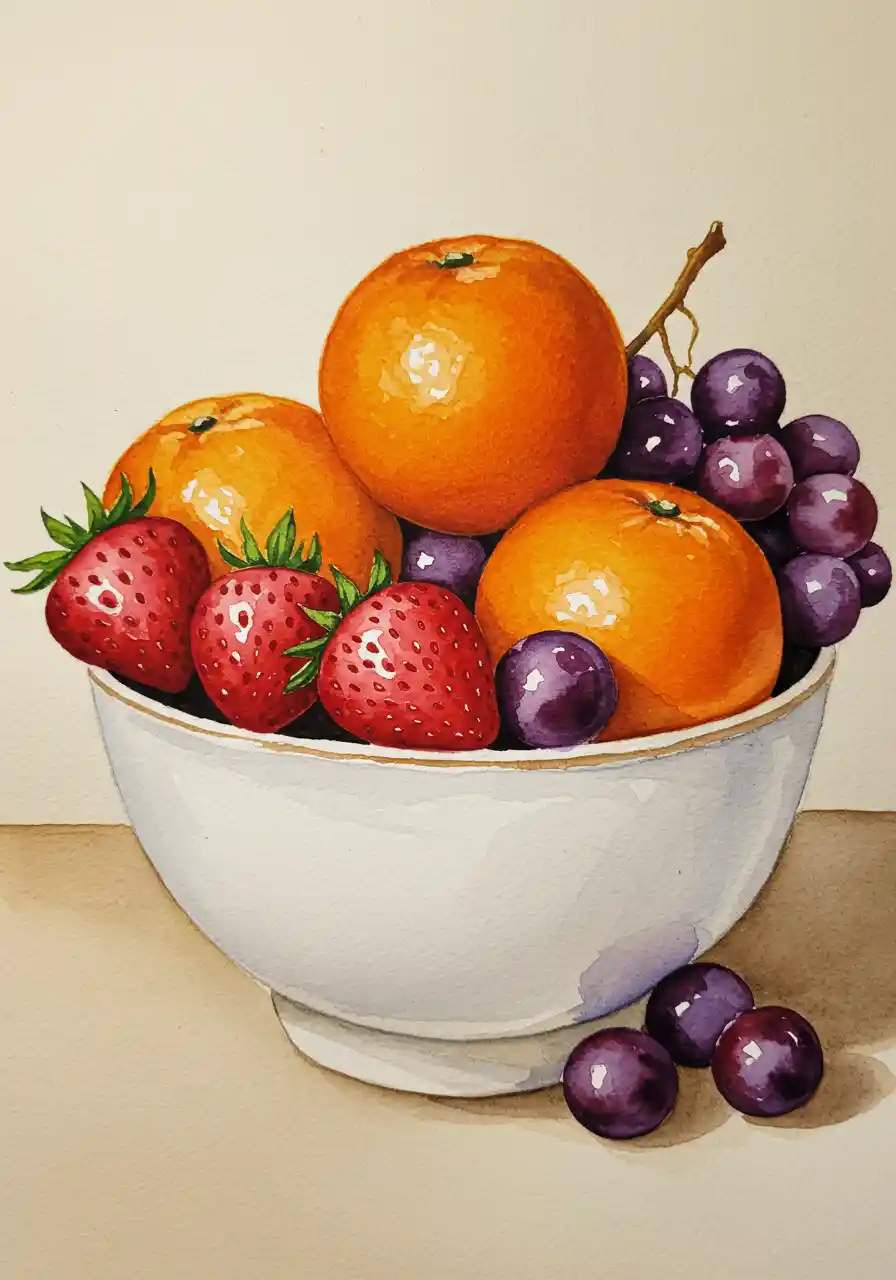Discover the beauty of colorful fruits through the delicate touch of watercolor art. This vibrant collection showcases 14 unique illustrations that highlight the charm of fruit painting.
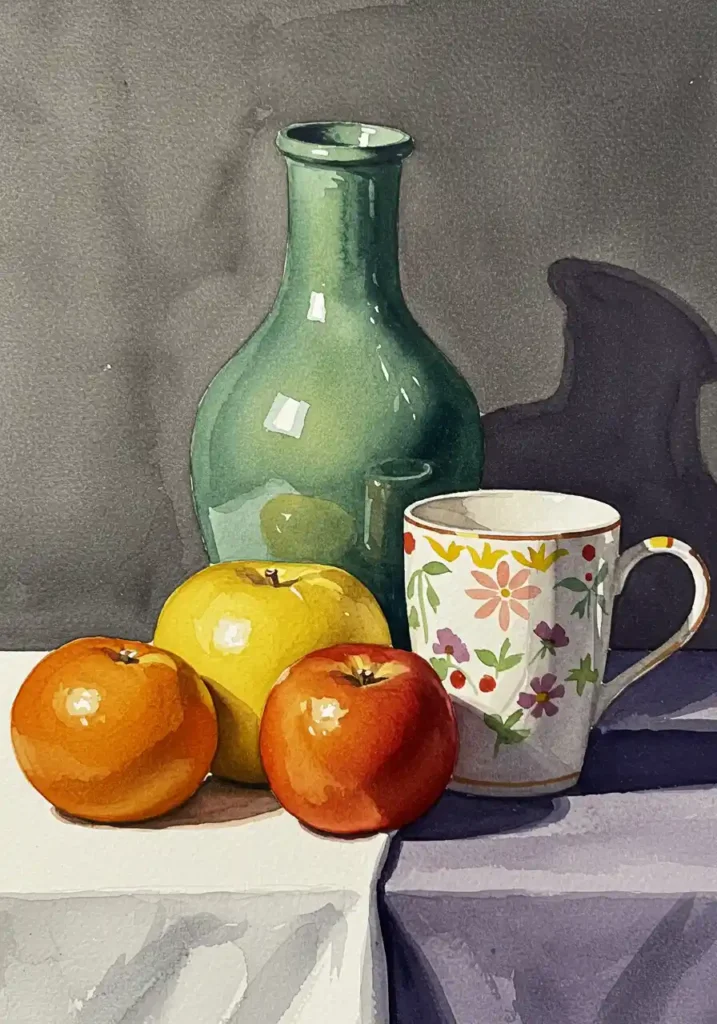
Whether you’re an artist, a fruit enthusiast, or simply looking for inspiration, this collection is sure to captivate. The vibrant colors and gentle washes of watercolor bring each fruit to life, creating a visually stunning experience.
Explore the world of fruit art and get ready to be inspired by the beauty and simplicity of these watercolor illustrations.
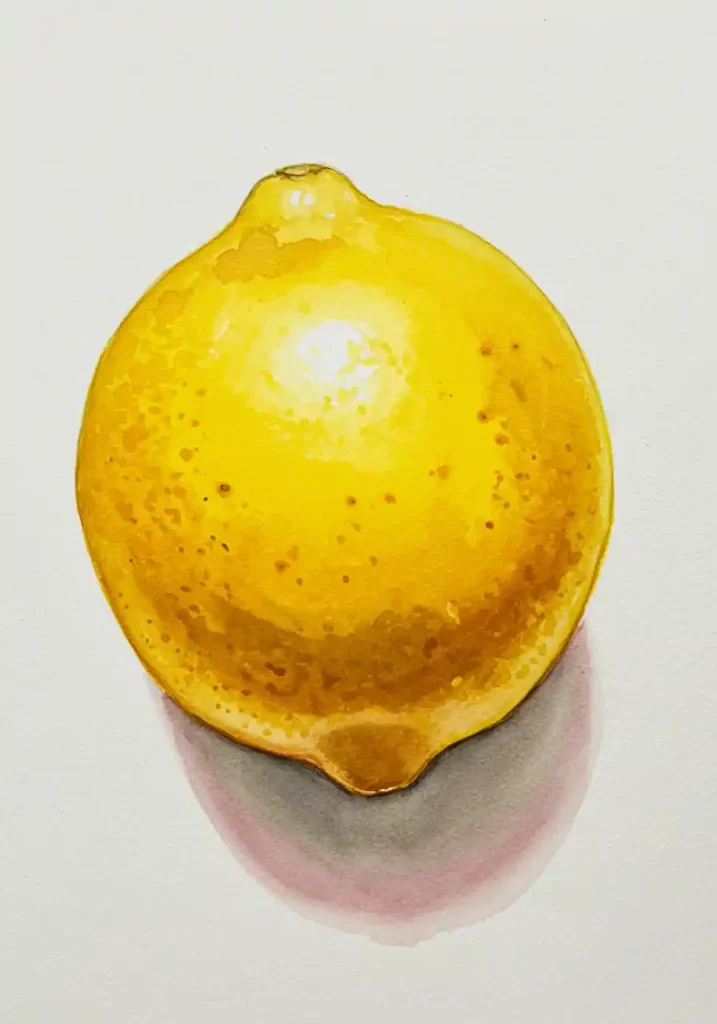
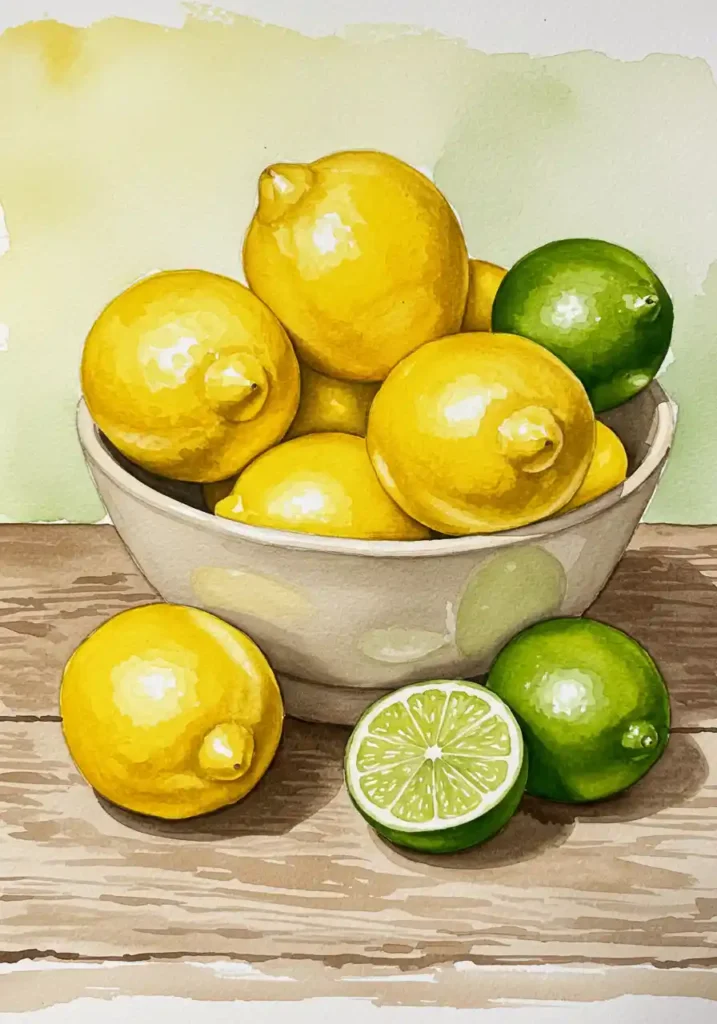
Key Takeaways
- 14 unique watercolor illustrations of colorful fruits
- Inspiration for artists and fruit enthusiasts alike
- A vibrant collection showcasing the charm of fruit painting
- Visually stunning experience with vibrant colors and gentle washes
- Perfect for those looking for art inspiration
The Beauty of Watercolor Fruit Painting
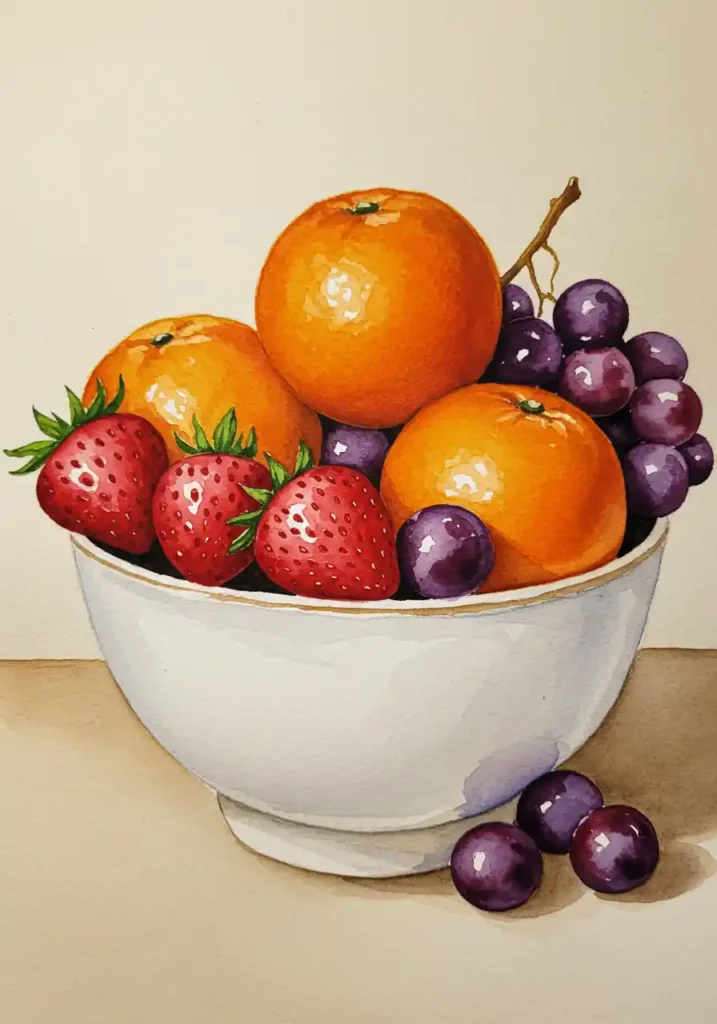
Fruits, with their diverse shapes and hues, make for captivating subjects in watercolor art, inspiring creativity and joy. The natural beauty of fruits, with their intricate details and vibrant colors, provides endless inspiration for artists.
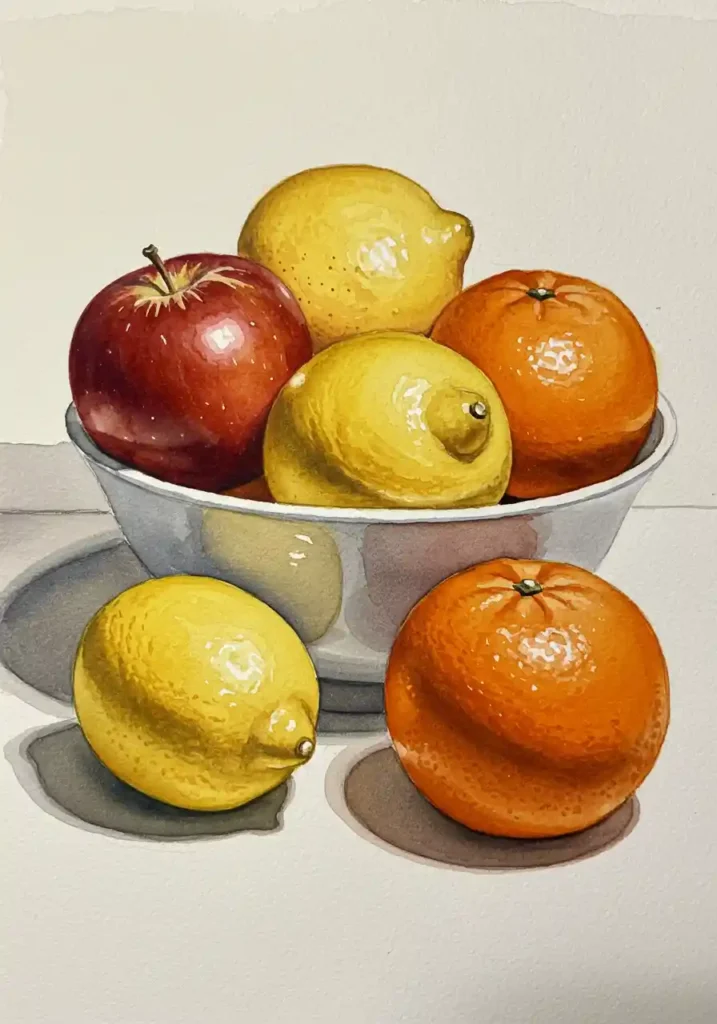
Why Fruits Make Perfect Watercolor Subjects
Fruits are ideal subjects for watercolor painting due to their varied textures, colors, and forms. The translucency of watercolors perfectly captures the softness of fruit skins and the juiciness of their flesh. For beginners, starting with simple fruit compositions can help build confidence and skill in watercolor techniques.
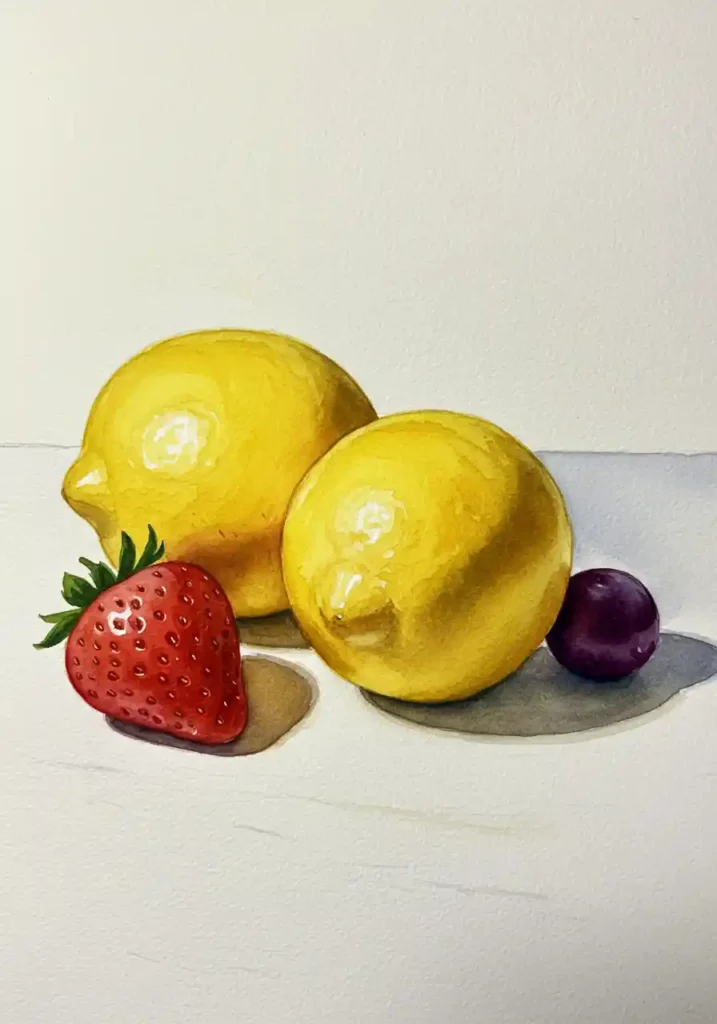
The diversity in fruit shapes and colors also allows artists to experiment with different watercolor techniques, from the wet-on-wet method for blending colors to creating subtle texture and depth.
Essential Supplies for Watercolor Fruit Painting
To start watercolor fruit painting, artists will need a few essential supplies. These include watercolor paints, which come in pans or tubes, watercolor paper that is heavy and textured, and a range of brushes from fine to broad. A palette for mixing colors and a container for water are also necessary.
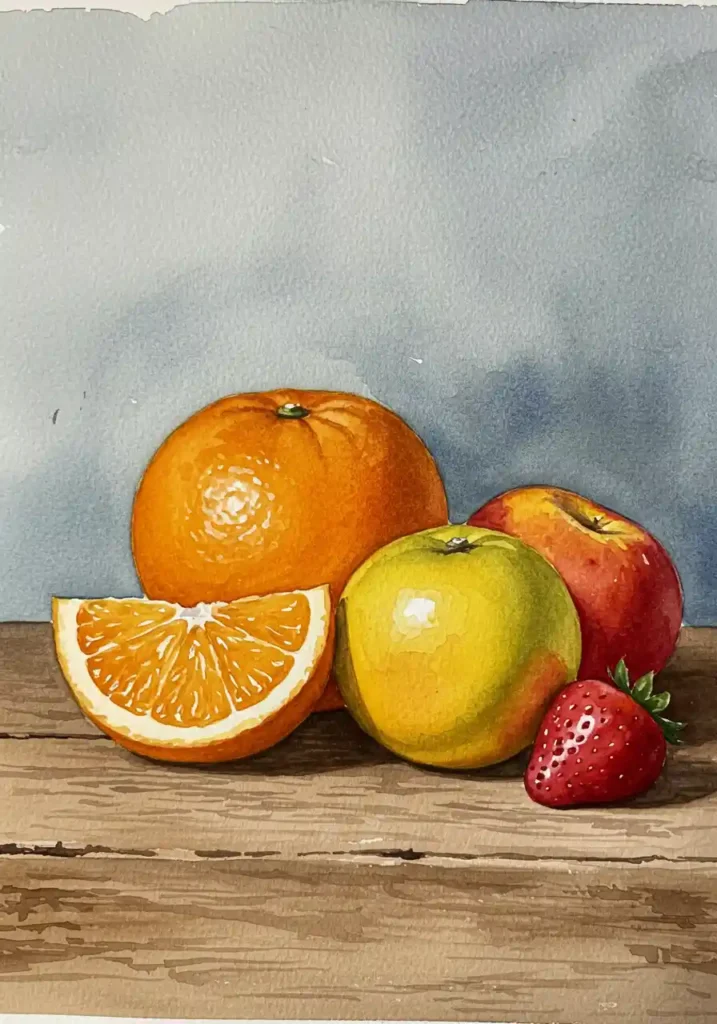
For beginners, investing in a basic set of watercolor paints and a few quality brushes can make a significant difference in the outcome of their artwork. Understanding the basics of color theory and practicing different brushstrokes can also enhance the learning process.
Basic Watercolor Techniques for Painting Fruits
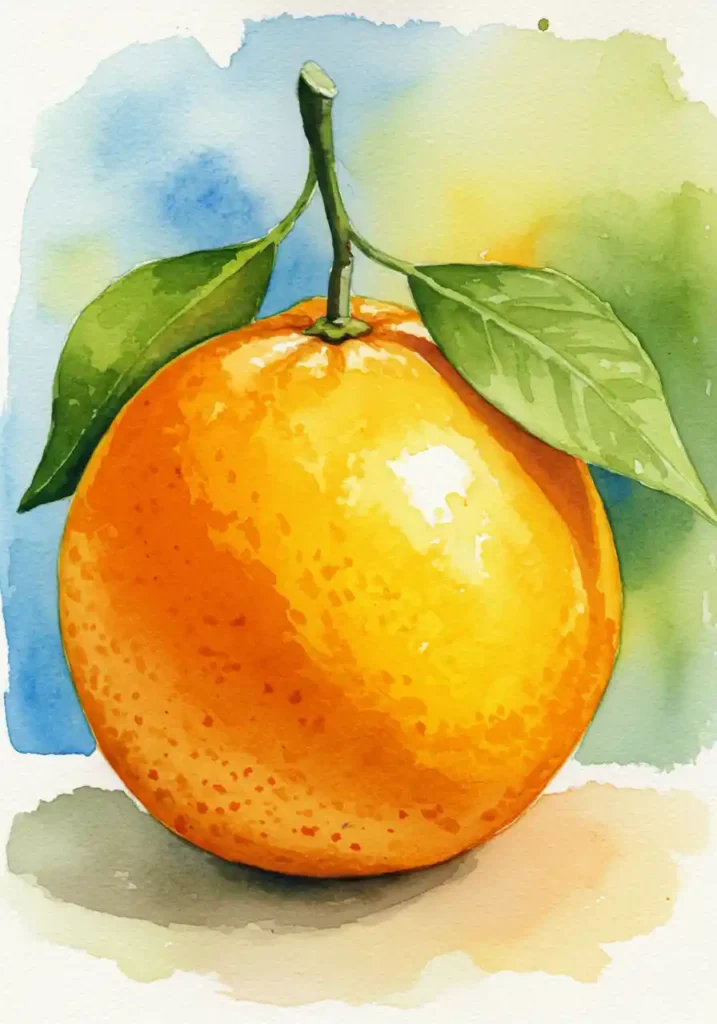
The art of painting fruits in watercolor involves several key techniques that can elevate your artwork. To create vibrant and lifelike fruit illustrations, it’s essential to understand and master these fundamental methods.
Wet-on-Wet Technique for Juicy Effects
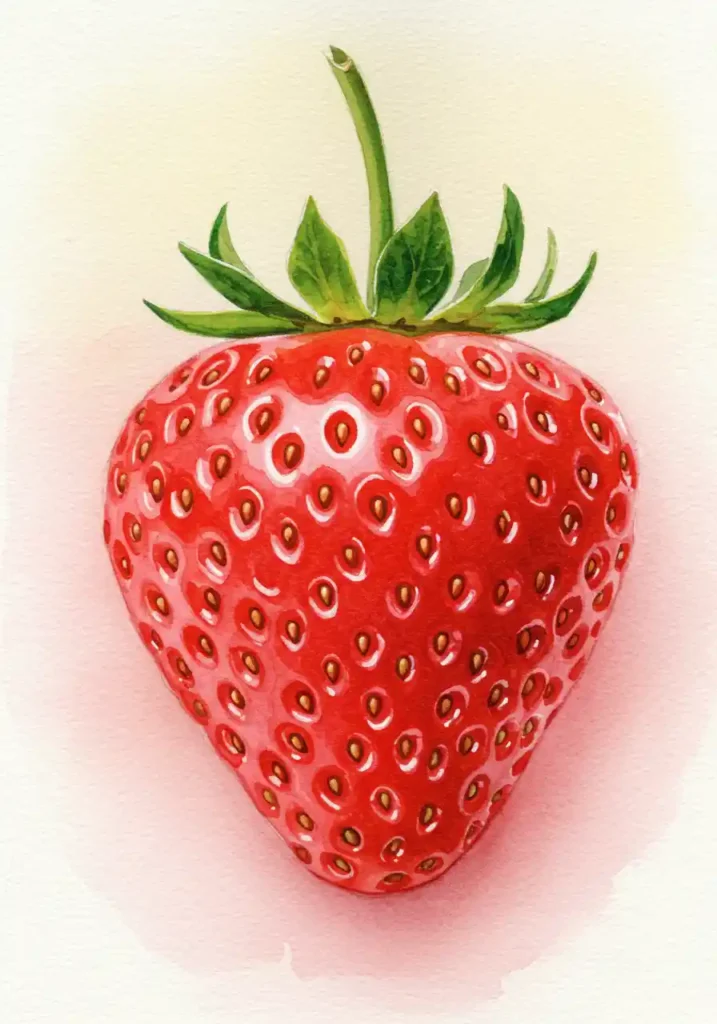
The wet-on-wet technique involves applying wet paint to wet paper, allowing for soft, blended edges and subtle color transitions. This technique is particularly effective for capturing the juicy texture of fruits like oranges or grapes. By using this method, you can achieve a fresh and vibrant look in your watercolor paintings.
Layering Colors for Depth and Dimension
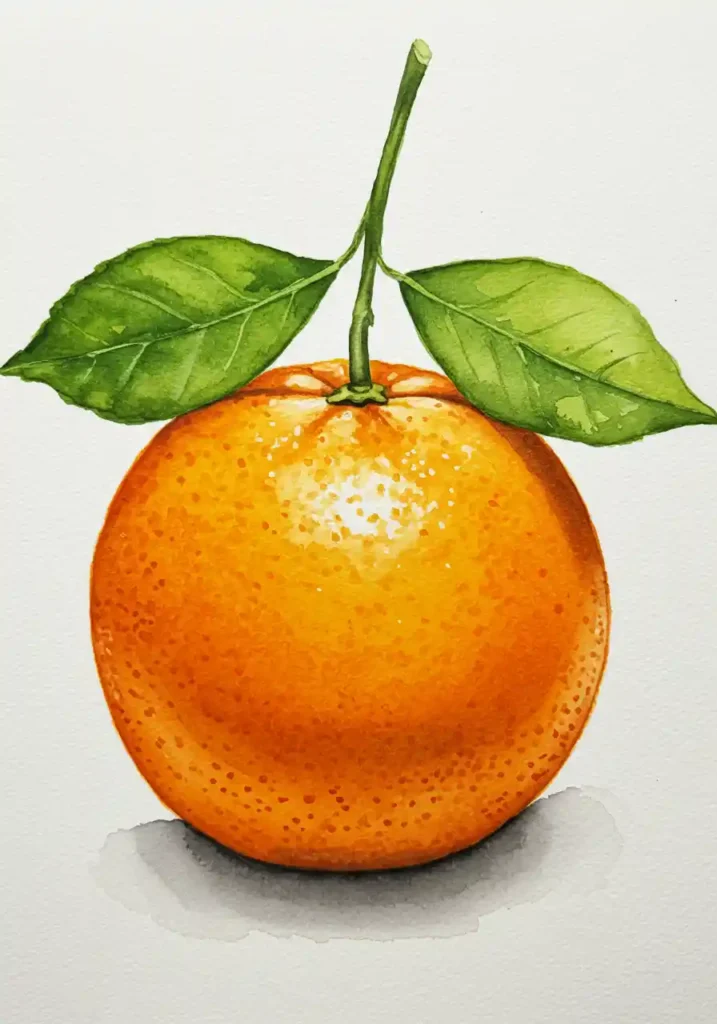
Layering colors is a crucial technique for adding depth and dimension to your fruit paintings. Start with a light wash and gradually build up layers of color, allowing each layer to dry before adding the next. This process creates a sense of luminosity and richness, making your fruits appear more realistic and engaging.
Creating Highlights and Shadows
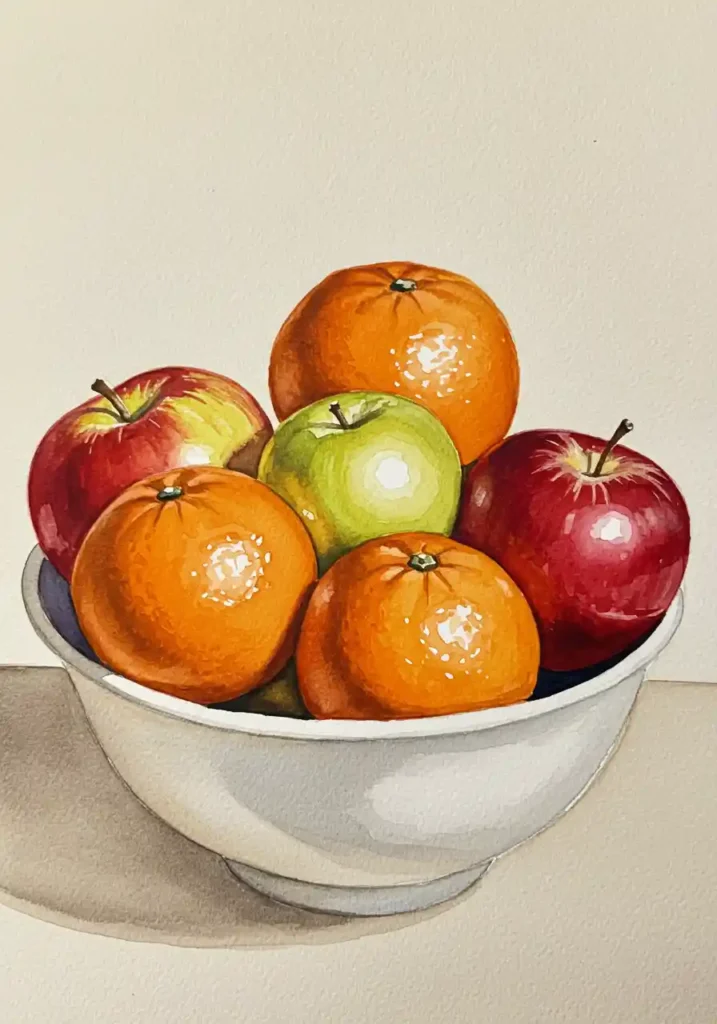
Highlights and shadows are vital for creating a three-dimensional effect in your watercolor fruit paintings. Use the white of the paper or a light wash to create highlights on the raised areas of the fruit. For shadows, mix a darker version of the fruit’s color and apply it to the recessed areas, blending softly to create a natural transition.
| Technique | Description | Effect |
|---|---|---|
| Wet-on-Wet | Applying wet paint to wet paper | Soft, blended edges and subtle color transitions |
| Layering Colors | Building up layers of color | Depth and dimension |
| Creating Highlights and Shadows | Using light and dark washes to define form | Three-dimensional effect |
Color Theory for Vibrant Fruit Illustrations
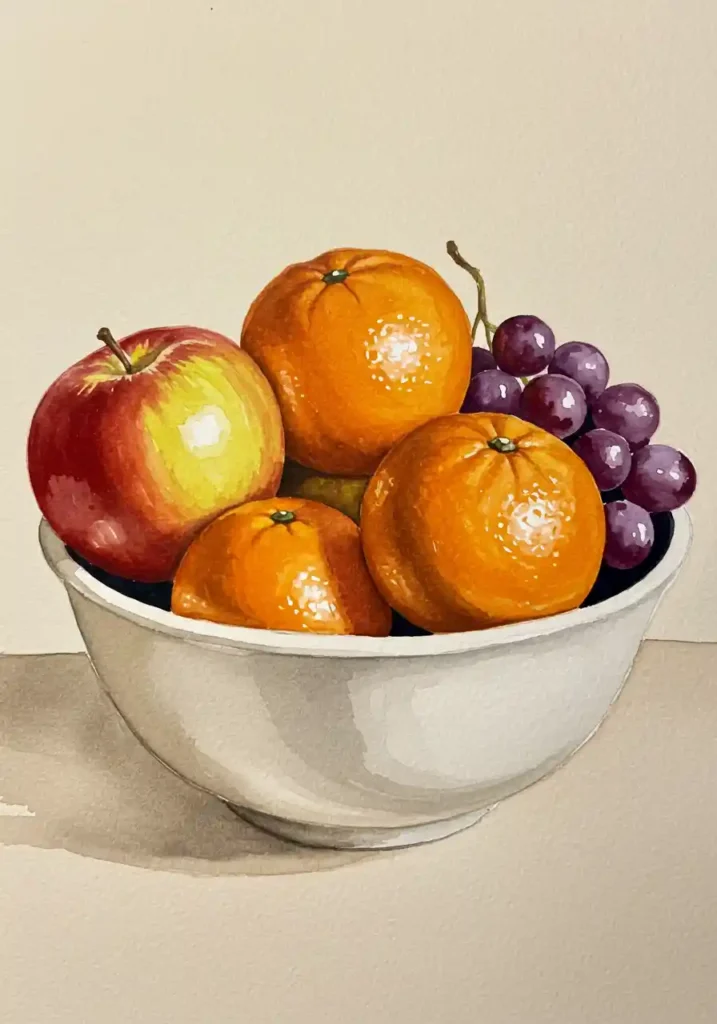
Mastering color theory is essential for creating vibrant fruit illustrations that capture the essence of the subject. By understanding how to effectively use colors, artists can enhance the visual appeal of their watercolor paintings.
Color theory is a set of principles used to create harmonious color combinations and to understand the way colors interact with each other. In the context of fruit illustrations, it helps artists to accurately depict the natural colors of the fruits and to create a visually appealing contrast.
Understanding Complementary Colors in Fruits
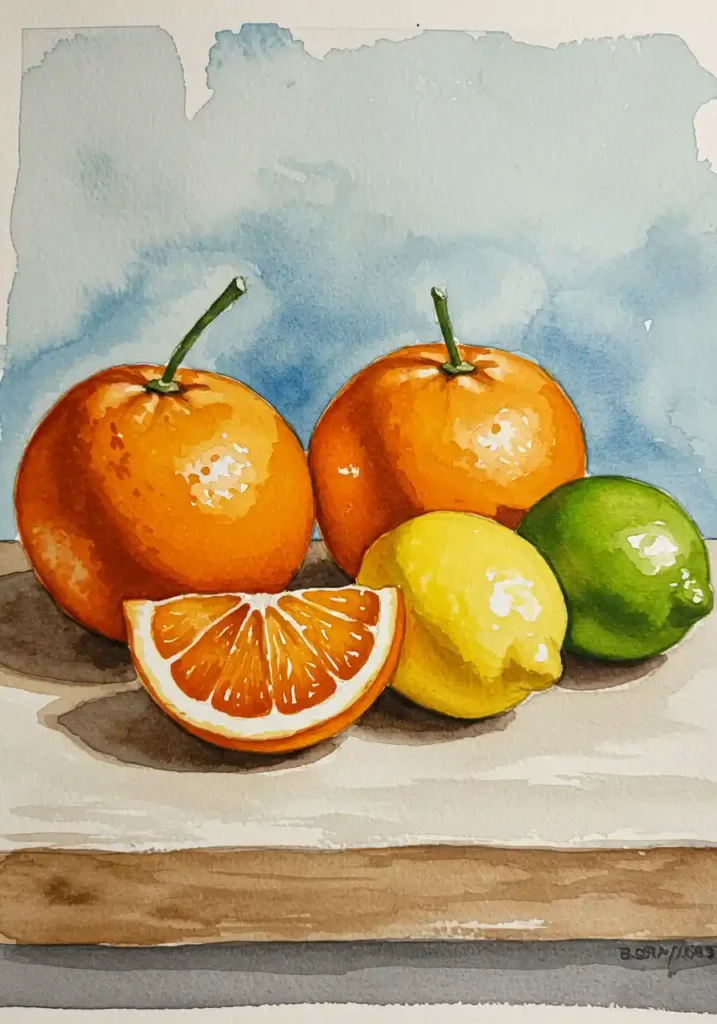
Complementary colors are pairs of colors that are opposite each other on the color wheel, such as blue and orange. When used together, they create a strong contrast that can make fruit illustrations more vibrant. For example, the blue undertones in a purple plum can be accentuated by painting the surrounding background with warm orange tones.
Understanding how to use complementary colors effectively can add depth and dimension to fruit paintings. It’s a technique often used by artists to draw attention to specific parts of the composition.
Mixing Natural Fruit Tones
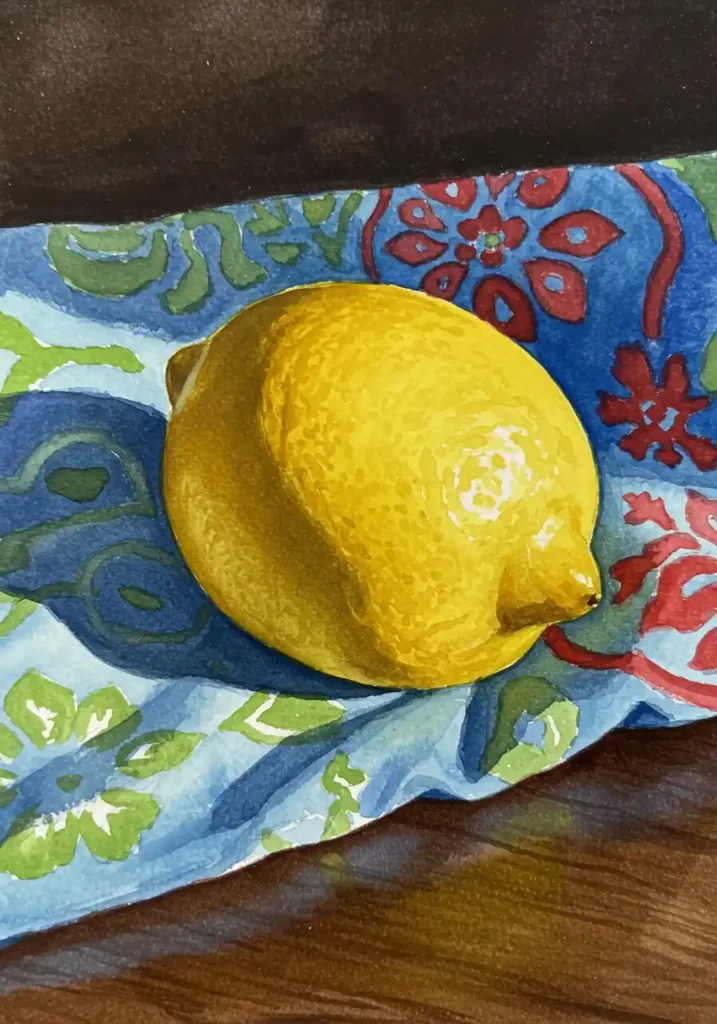
Mixing natural fruit tones involves creating a palette that accurately represents the colors of the fruit being painted. This requires observing the subtle variations in color that occur in nature. For instance, a ripe strawberry isn’t just red; it has nuances of yellow, pink, and even green.
To achieve realistic fruit colors, artists should practice mixing watercolors to match the natural tones they observe. This might involve layering colors or creating custom mixes on the palette.
Watercolor Fruit Painting Ideas: 14 Inspiring Illustrations of Colorful Fruits
Unleash your artistic side with our compilation of 14 stunning watercolor fruit painting ideas. Watercolor fruit painting is a delightful way to capture the beauty and vibrancy of colorful fruits. Our curated collection showcases a variety of fruits, each brought to life through the soft, flowing strokes of watercolor.
Overview of Our Curated Collection
Our collection features a diverse range of fruits, from the juiciest strawberries to the most vibrant citrus slices. Each piece is carefully crafted to highlight the unique characteristics of the fruit, using a mix of bold colors and delicate washes. The result is a series of 14 beautiful illustrations that are sure to inspire any artist or fruit lover.
| Fruit | Color Palette | Technique |
|---|---|---|
| Strawberries | Red, Green | Wet-on-wet |
| Citrus | Orange, Yellow, Green | Layering |
| Apples | Red, Green, Yellow | Blending |
How to Use These Ideas as Inspiration
To get the most out of our watercolor fruit painting ideas, try experimenting with different techniques and color combinations. Use our illustrations as a starting point, and then add your own twist to create something truly unique. Don’t be afraid to mix and match different styles and approaches to find what works best for you.
By embracing the beauty of colorful fruits and the versatility of watercolor, you can unlock a world of creative possibilities. So, grab your brushes and let the vibrant colors of the fruit inspire you to create something beautiful.
Citrus Sensations: Vibrant Orange, Lemon, and Lime Illustrations
The world of citrus fruits offers a kaleidoscope of colors and textures, perfect for watercolor artists looking for inspiration. Citrus fruits like oranges, lemons, and limes are not only a delight to the taste buds but also a visual treat when captured on paper.
These fruits are characterized by their vibrant colors and intricate details, making them ideal subjects for watercolor painting. Let’s dive into some inspiring illustrations that showcase the beauty of citrus fruits.
Zesty Orange Slice with Droplets
An orange slice, glistening with droplets of juice, is a captivating subject. The vibrant orange color can be achieved by layering washes of cadmium orange and burnt sienna. To capture the droplets, use a wet-on-wet technique to create soft, rounded highlights.
Bright Yellow Lemon Study
A bright yellow lemon is a study in contrast and color. Begin with a light wash of yellow ochre, gradually building up to deeper cadmium yellow tones. The key to capturing the lemon’s texture is in the subtle gradient of colors, from the bright yellow skin to the slightly greenish tint at the stem.
Lime with Transparent Glow
Limes, with their transparent, glowing skin, offer a unique challenge and opportunity for watercolor artists. To achieve this effect, start with a very light wash of green, gradually layering on more color to suggest the lime’s rounded form. The transparency can be enhanced by leaving small areas of the paper white.
Here’s a comparison of the color palettes used for these citrus fruits:
| Fruit | Primary Color | Secondary Color |
|---|---|---|
| Orange | Cadmium Orange | Burnt Sienna |
| Lemon | Cadmium Yellow | Yellow Ochre |
| Lime | Viridian Green | Yellow Green |
As artist
“The simplicity of citrus fruits belies the complexity of their beauty. Capturing their essence requires patience and a deep understanding of color and light.”
so aptly puts it, the art lies in capturing the subtleties of these fruits.
Berry Beautiful: Strawberries, Blueberries, and Raspberries
The world of berries is a treasure trove of inspiration for artists, with strawberries, blueberries, and raspberries being particularly captivating. These fruits offer a kaleidoscope of colors and textures that can be beautifully captured through watercolor art.
Luscious Red Strawberry with Seeds
Strawberries are a favorite among artists due to their bright red color and intricate seeds. To capture their beauty, start by painting the overall shape with a wet-on-wet technique, allowing the colors to blend naturally. The seeds can be added later using a fine brush, creating a textured effect that adds depth to the painting.
Cluster of Blueberries with Morning Dew
Blueberries, with their powdery blue skin, offer a unique challenge for watercolor artists. To achieve the characteristic bloom, mix a light blue wash and apply it to the berries, allowing it to dry before adding shading. The morning dew can be captured by adding subtle highlights around the berries, giving them a fresh, dewy appearance.
Delicate Raspberry Detail Work
Raspberries are known for their delicate, hollow center and intricate details. When painting raspberries, focus on capturing the soft, fragile texture of the fruit. Use a wet-on-wet technique to blend the colors, and then add the details with a fine brush, emphasizing the unique structure of the raspberry.
By exploring the unique characteristics of strawberries, blueberries, and raspberries, artists can create stunning watercolor pieces that showcase the beauty of these fruits. Whether you’re a beginner or an experienced artist, the world of berries offers endless inspiration for your art.
Tropical Treasures: Pineapple, Mango, and Papaya
Tropical fruits offer a vibrant palette for watercolor artists, with pineapple, mango, and papaya being particularly inspiring subjects. These fruits are not only visually appealing but also provide a unique challenge for artists looking to capture their textures and colors.
The pineapple, with its tough exterior and crown of leaves, is a great subject for practicing texture. To capture its essence, start by mixing warm colors for the fruit’s body and then add green for the leaves. The contrast between the rough skin and the soft leaves creates a compelling visual effect.
Golden Pineapple with Textured Crown
To paint a golden pineapple, begin with a wet-on-wet technique to achieve a smooth base color. Then, use a smaller brush to add texture to the skin, creating a rugged appearance. The crown can be painted with loose, expressive strokes to convey the softness of the leaves.
Sunset-Hued Mango Slice
The mango is another tropical fruit that lends itself beautifully to watercolor. To capture the vibrant colors of a mango slice, start with a gradient wash to achieve the sunset hues. Then, add subtle texture to suggest the fruit’s juicy pulp.
Exotic Papaya with Black Seeds
Papaya, with its bright orange color and black seeds, offers a striking contrast that can be captivating on canvas. To paint papaya, use a mix of orange and yellow to achieve a vibrant color. The black seeds can be added using a fine brush, creating a beautiful contrast against the bright fruit.
By focusing on the unique characteristics of these tropical fruits, artists can create stunning watercolor pieces that showcase their vibrant colors and textures. Whether you’re a beginner or an experienced artist, pineapple, mango, and papaya are excellent subjects for your next watercolor project.
Orchard Favorites: Apples, Pears, and Peaches
Orchard fruits, with their vibrant colors and varied textures, offer a wealth of inspiration for watercolor artists. The charm of apples, pears, and peaches lies not only in their taste but also in their visual appeal, making them a favorite subject among artists.
Classic Red Apple with Leaf
The classic red apple is a timeless subject for watercolor painting. To capture its essence, focus on the subtle gradations of red and the contrast with the green leaf. Use a wet-on-wet technique to achieve soft, blended colors. The leaf adds a touch of realism and creates a sense of movement.
Gradient Green Pear Study
Pears, with their smooth skin and elegant shape, are another orchard favorite. A gradient green pear study can showcase the fruit’s subtle color variations. Start with a light wash and gradually build up to deeper shades, capturing the fruit’s texture and form. The soft gradient effect can add a sense of depth and dimension.
Fuzzy Peach with Soft Blush
Peaches, known for their fuzzy skin and soft blush tones, present a unique challenge and opportunity for watercolor artists. To capture the peach’s fuzzy texture, use short, gentle strokes with a fine brush. The soft blush color can be achieved by layering washes, starting with a light base and adding deeper tones for depth.
By focusing on these orchard favorites, watercolor artists can explore a range of techniques and effects, from the smooth skin of pears to the fuzzy texture of peaches and the vibrant red of apples. Each fruit offers a unique canvas for artistic expression.
Exotic Inspirations: Dragon Fruit, Kiwi, and Pomegranate
Delving into the world of exotic fruits can elevate your watercolor art to new heights. Fruits like dragon fruit, kiwi, and pomegranate, with their vibrant colors and unique textures, offer a wealth of inspiration for artists looking to expand their repertoire.
The dragon fruit is a standout subject with its striking pink and white hues. To capture its beauty, start by layering soft washes to achieve the fruit’s delicate coloration. The contrast between the vibrant pink skin and the white or red flesh, dotted with tiny black seeds, makes for a captivating composition.
Dragon Fruit’s Striking Pink and White
When painting dragon fruit, focus on the subtle gradations of color within its skin and flesh. Use a wet-on-wet technique to blend the colors seamlessly, creating a soft, realistic effect. The intricate details of the seeds can be added later with a fine brush.
Kiwi’s Emerald Interior
The kiwi, with its fuzzy brown skin and vibrant emerald green flesh, presents an interesting contrast. To capture its essence, emphasize the texture of the skin using drybrush strokes, and then move on to the flesh, using bright, saturated greens to bring out its freshness.
Pomegranate’s Ruby Red Seeds
The pomegranate is renowned for its ruby red seeds, which burst with juicy flavor. When painting this fruit, concentrate on capturing the intricate details of the seeds and the way they are arranged within the fruit’s compartments. Use a mix of red and orange hues to achieve a lifelike representation.
By exploring these exotic fruits through watercolor, artists can discover new techniques and inspiration, enriching their art with the beauty and diversity of the natural world.
Conclusion: Displaying and Sharing Your Fruit Artwork
Now that you’ve created your beautiful watercolor fruit artwork, it’s time to display and share it with others. Whether you’re a home decorator looking to add a personal touch to your space, a student showcasing your artistic skills, or a beginner eager to share your progress, there are many ways to showcase your artwork.
Consider framing your favorite pieces and hanging them in a prominent place, such as a living room or kitchen. You can also share your artwork on social media platforms, like Instagram or Facebook, to connect with other artists and enthusiasts. Adapt your artwork for a specific audience by creating themed pieces, like a still life for a dining room or a colorful fruit arrangement for a child’s nursery.
Sharing your artwork can be a great way to inspire others and get feedback on your work. Don’t be afraid to experiment and try new things – it’s all part of the creative process. By displaying and sharing your fruit artwork, you’ll be able to enjoy the fruits of your labor and inspire others to do the same.
FAQ
What are the essential supplies needed for watercolor fruit painting?
To get started with watercolor fruit painting, you’ll need watercolor paints, brushes, watercolor paper, a palette, and a container for water. Optional supplies include masking fluid, a spray bottle, and a hairdryer.
How do I achieve vibrant colors in my watercolor fruit paintings?
To achieve vibrant colors, use high-quality watercolor paints and understand color theory, particularly complementary colors. Mixing natural fruit tones and layering colors can also enhance the vibrancy of your artwork.
What are some basic watercolor techniques for painting fruits?
Basic techniques include the wet-on-wet technique for creating juicy effects, layering colors for depth and dimension, and creating highlights and shadows to add realism to your fruit paintings.
Can I use these watercolor fruit painting ideas for other subjects or audiences?
Absolutely! The techniques and ideas presented can be adapted for various subjects and audiences, such as beginners, students, or home decorators, by adjusting the complexity and style of your artwork.
How do I display and share my finished watercolor fruit artwork?
You can display your artwork by framing it, creating a gallery wall, or showcasing it on a shelf or mantle. To share your work, consider posting it on social media, participating in local art exhibitions, or sharing it with friends and family.
Are there any tips for capturing the unique characteristics of different fruits in watercolor?
Yes, observe the texture, color, and shape of the fruit you’re painting. For example, citrus fruits have a distinct texture and shine, while berries have delicate seeds and soft color. Practice capturing these details to create realistic and appealing fruit illustrations.
